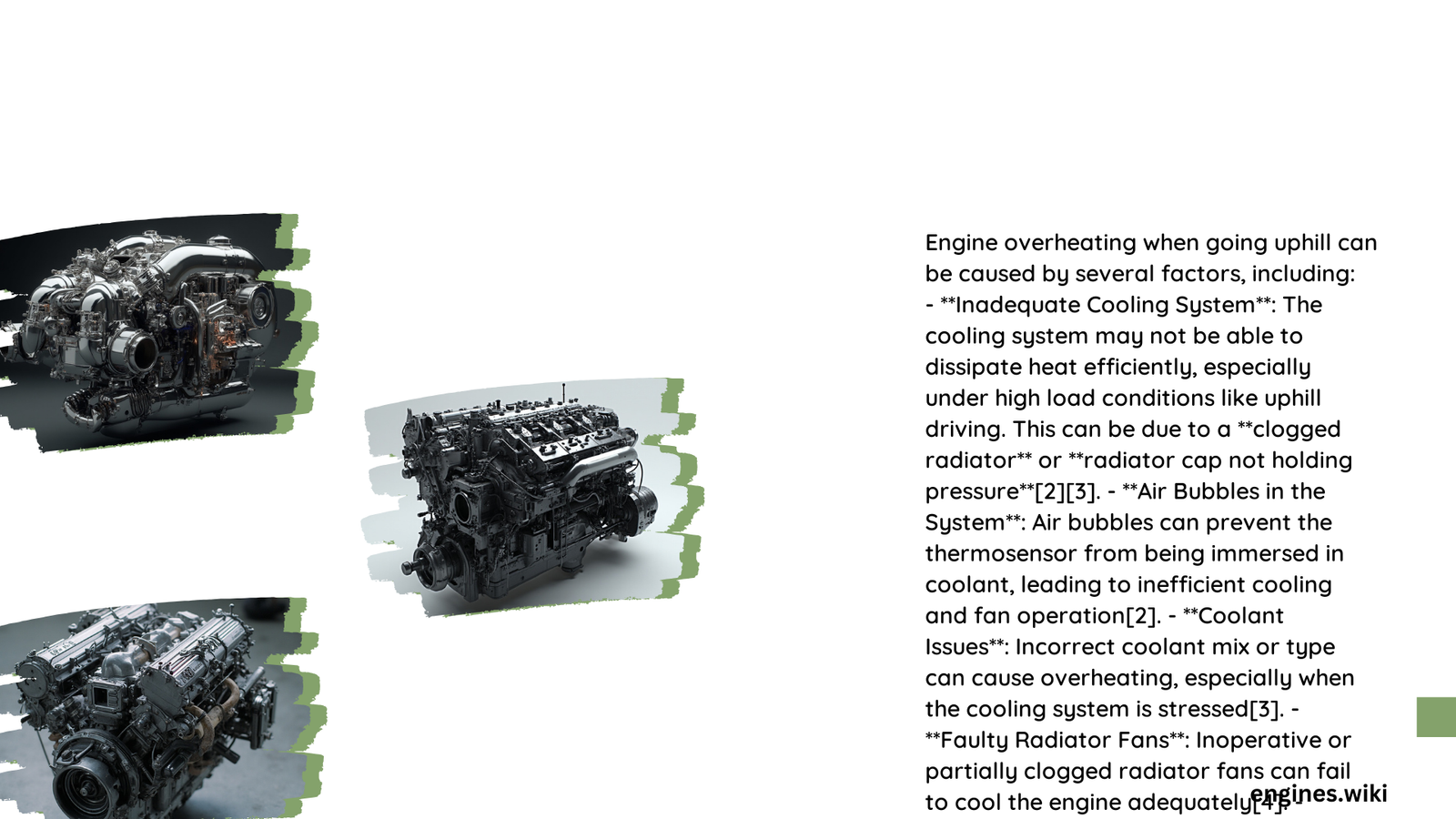Driving uphill can transform a pleasant journey into a stressful experience when your engine starts overheating. Vehicle engines generate substantial heat during steep climbs, and without proper cooling mechanisms, temperature escalation becomes inevitable. Understanding the intricate dynamics of engine temperature management during challenging terrain is crucial for preventing potential mechanical failures and ensuring safe, smooth travel.
Why Does an Engine Overheat When Climbing Steep Roads?
What Mechanical Factors Trigger Overheating?
Uphill driving creates unique stress conditions for vehicle engines. Several interconnected mechanical factors contribute to temperature elevation:
- Cooling System Limitations
- Inadequate coolant circulation
- Compromised radiator efficiency
-
Restricted heat dissipation mechanisms
-
Engine Load Dynamics
- Increased power demand
- Higher RPM requirements
- Prolonged high-stress operation
How Do Environmental Conditions Impact Engine Temperature?
| Environmental Factor | Temperature Impact | Risk Level |
|---|---|---|
| Ambient Temperature | High heat reduces cooling efficiency | High |
| Elevation | Thinner air decreases cooling performance | Medium |
| Road Gradient | Steeper inclines increase engine strain | Very High |
What Are the Primary Causes of Uphill Overheating?
Coolant System Vulnerabilities
- Low coolant levels
- Incorrect coolant mixture
- Air pockets in cooling system
- Degraded radiator performance
Mechanical Stress Indicators
- Consistent temperature gauge elevation
- Reduced engine performance
- Unusual steam or smoke emission
- Potential warning light activation
How Can Drivers Prevent Uphill Overheating?
Preventative Maintenance Strategies:
– Regular cooling system inspections
– Maintain proper coolant levels
– Replace worn radiator components
– Use high-quality coolant mixtures
– Perform periodic system flush
What Immediate Actions Should You Take When Overheating Occurs?
- Safely pull over to a flat surface
- Turn off air conditioning
- Switch engine to neutral
- Allow engine to cool down
- Check coolant levels
- Look for visible leaks
- Do not remove radiator cap when hot
Technical Insights: Temperature Thresholds
Most modern engines begin experiencing stress around:
– 90°C (194°F): Initial warning zone
– 110°C (230°F): Critical overheating range
– 120°C (248°F): Potential severe damage threshold
Advanced Diagnostic Recommendations
Professional Assessment Checklist:
– Thermostat functionality
– Water pump performance
– Radiator fan operation
– Coolant system pressure test
– Comprehensive cooling system evaluation
Cost-Effective Solutions
While professional diagnosis might seem expensive, proactive maintenance prevents:
– Expensive engine repairs
– Potential vehicle replacement
– Unexpected roadside breakdowns
Conclusion

Understanding why engines overheat when going uphill empowers drivers to implement strategic preventative measures. Regular maintenance, awareness of mechanical limitations, and prompt response to warning signs are key to ensuring reliable vehicle performance.
